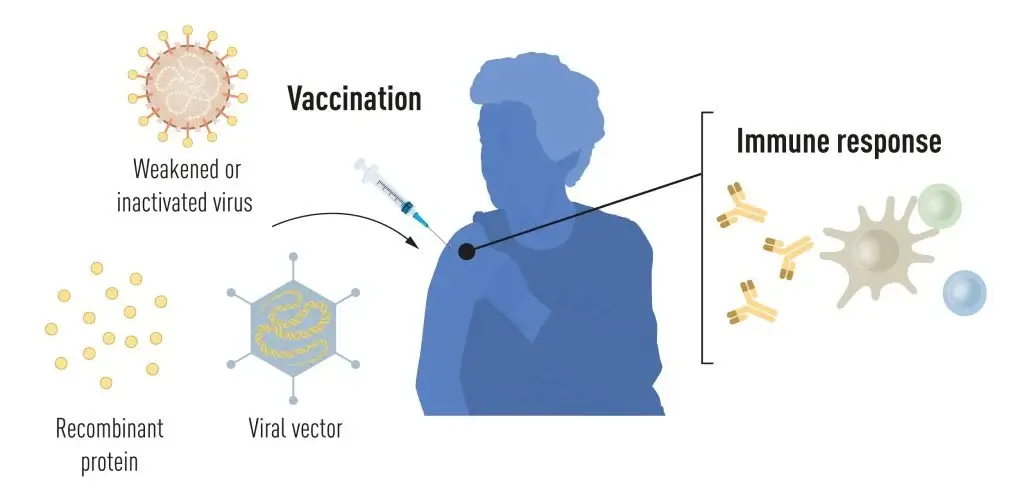Katalin Karikó and Drew Weissman They immediately realized that their discovery was of enormous significance for the possible use of messenger RNA in medicine. These important findings were published in 2005, 15 years before the outbreak of the Corona epidemic
The 2023 Nobel Prize in Physiology/Medicine was awarded jointly to two researchers: Katalin Karikó from Hungary and Drew Weissman from the USA for their discoveries regarding changes in nucleoside bases that enabled the development of effective messenger RNA (mRNA) vaccines against Covid-19.
The discoveries made by this year's Nobel Prize winners were essential for the development of effective messenger RNA vaccines against Covid-19 during the epidemic that began in early 2020. Thanks to their groundbreaking findings, which brought about a fundamental change in the understanding of the interrelationships between messenger RNA and Our Immune System The award winners have contributed to the unprecedented pace of vaccine development during one of the greatest health threats in the modern era for humanity.

Messenger RNA vaccines: a successful idea
Inside our cells, genetic information coded and encoded in DNA is transferred to messenger RNA that serves as a template for protein production. During the eighties of the last century, efficient methods were developed for the production of messenger RNA without the use of cell cultures, called plate transcription (vitro transcription). This method succeeded in accelerating the development of applications in the field of molecular biology in several fields. Ideas to use messenger RNA technologies to develop vaccines and other medical uses soon emerged in the world of science, but along the way they faced many more bumps. Messenger RNA transcribed in a dish was found to be unstable and challenging to transfer into the body, necessitating the development of sophisticated lipid carrier systems in order to keep the messenger RNA stable and intact. Moreover, RNA generated in the dish caused inflammatory side reactions. Enthusiasm regarding the development of RNA technologies for medical uses, therefore, was initially very limited.
These bumps will not discourage the Hungarian biochemist Katlin Crico, who has devoted her years of research to the development of effective methods in messenger RNA technologies for medical use. In the early XNUMXs, when she was an associate professor at the University of Pennsylvania, she remained true to her belief that messenger RNA could indeed be used as a medical method, despite the difficulties she encountered in convincing the research donors of the importance of her research. Crico's new colleague at her university was immune system expert Drew Weissman. At the time, he was interested in dendritic cells, which play an important part in the immune system in terms of tracking and activating a vaccine-induced immune response. A fruitful collaboration between the two researchers soon began, focusing on the question of how different types of RNA react with the vaccine.
the breakthrough
Crico Weissman noticed that dendritic cells manage to recognize messenger RNA transcribed in the dish as a foreign substance, which causes them to activate and release inflammatory signaling molecules. They wondered if the transcribed messenger RNA was detected as foreign material, while messenger RNA derived from mammalian cells was not. Crico Weissman realized that a number of essential properties must distinguish these two types of RNA.
Normal RNA includes four bases, whose initials are: A (adenine), U (uracil), G (guanine) and C (cytosine), and they correspond to the four bases of DNA: A (adenine), T (thymine ), G (guanine) and C (cytosine), the letters that make up the genetic code. Crico Weissman knew that bases of RNA from a living source occasionally change chemically, while transcribed messenger RNA does not. They wondered if the absence of modified bases in the transcribed messenger RNA could explain the unwanted inflammatory response. In order to examine this question, they synthesized two configurations of messenger RNA each with unique changes in their bases, which they introduced into the dendritic cells. The results were amazing: the inflammatory reaction almost disappeared when chemical changes were introduced into the bases. This result constituted a paradigm shift in the researchers' understanding of how cells recognize and respond to different types of messenger RNA. Crico Weissman immediately realized that their discovery was of enormous significance for the possible use of messenger RNA in medicine. These important findings were published in 2005, 15 years before the outbreak of the Corona epidemic.
![Figure 2. Messenger RNA contains four different types of bases whose initials are A (adenine), U (uracil), G (guanine) and C (cytosine). The bride and groom of this year's Nobel Prize discovered that messenger RNA has Chemically modified bases can be used to prevent the activation of inflammatory responses (secretion of signaling molecules) and increase the production of proteins after the messenger RNA is introduced into the body. [Courtesy of the Committee for the Prize for Physiology or Medicine]](https://www.hayadan.org.il/images/content3/2023/10/press-medicineprize2023-figure2-1024x905-1.webp)
In additional studies published in 2008 and 2010, Kuriko Weissman showed that the transfer of messenger RNA with the changed bases significantly increased protein production, compared to the original messenger RNA. They discovered that this is the result of reduced activity of a specific enzyme that regulates the production of proteins. Thanks to their discoveries that chemical modification of the nuclear bases reduces both the inflammatory response and increases the production of proteins, Crico Weissman jointly removed a significant teacher on the way to clinical applications of messenger RNA.
Messenger RNA vaccines demonstrate their capabilities
Interest in messenger RNA technology began to rise, and in 2010 several corporations began to develop the efficient method. Researchers have developed vaccines against the Zika virus and MERS-CoV; The second virus is very close to the SARS-CoV-2 virus. After the outbreak of the Covid-2 epidemic, two vaccines were developed with chemically modified messenger RNA capable of producing the protein found on the outer surface of the virus (SARS-CoV-19) at record speed. The studies reported a protection level of close to ninety-five percent, and both vaccines were approved for marketing in early December 2.
The impressive speed and flexibility with which these vaccines can be developed paved the way for the use of the innovative method also for vaccines against other infectious diseases. In the future, the technology could also be used for the transfer of medical proteins to the body and the treatment of several types of cancer.
Several other vaccines against SARS-CoV-2, based on other methods, were also introduced to the market soon, and together, to date, more than thirteen billion vaccines have been administered worldwide. Vaccines have saved millions of lives and prevented serious diseases in greater numbers, a fact that has allowed human communities to come back from isolation and return to their normal state. Thanks to their fundamental discoveries regarding the importance of chemical modification of nuclear bases in the BNA Shalich, the bride and groom of this year's Nobel Prize have contributed significantly to this important development in one of the greatest health danger periods of our time.
Important publications
- Karikó, K., Buckstein, M., Ni, H. and Weissman, D. Suppression of RNA Recognition by Toll-like Receptors: The impact of nucleoside modification and the evolutionary origin of RNA. Immunity 23, 165-175 (2005).
- Karikó, K., Muramatsu, H., Welsh, FA, Ludwig, J., Kato, H., Akira, S. and Weissman, D. Incorporation of pseudouridine into mRNA yields superior nonimmunogenic vector with increased translational capacity and biological stability. Mol Ther 16, 1833-1840 (2008).
- Anderson, BR, Muramatsu, H., Nallagatla, SR, Bevilacqua, PC, Sansing, LH, Weissman, D. and Karikó, K. Incorporation of pseudouridine into mRNA enhances translation by diminishing PKR activation. Nucleic Acid Res. 38, 5884-5892 (2010).
About the winners

|dreamtime.com
Katelyn Crico (Katalin Kariko) Born in 1955 in the city of Szolnok in Hungary. She received her doctorate from Szeged's University in 1982 and did postdoctoral research at the Academy of Sciences at that university until 1985. She then continued her research at Temple University in Philadelphia and the University of Health Sciences in Bethesda. In 1989, she was appointed an adjunct professor at the University of Pennsylvania, where she held that position until 2013. After that, she served as vice president and then senior vice president at BioNTech RNA Pharmaceuticals. Since 2021, she has served as a professor at the University of Seged and an associate professor at the Perlman School of Medicine at the University of Pennsylvania.
Drew Weisman (Drew Weissman) Born in 1959 in the town of Lexington in Massachusetts in the United States. He received his MD and PhD degrees from Boston University in 1987. He did his clinical residency at the Beth Israel Deaconess Medical Center at Harvard Medical School and his postdoctoral research at the National Institutes of Health. In 1997 Weissman founded his research group at the Perlman School of Medicine at the University of Pennsylvania. He serves as a professor of vaccine research and as director of the Penn Institute for RNA Innovation.
More of the topic in Hayadan:
